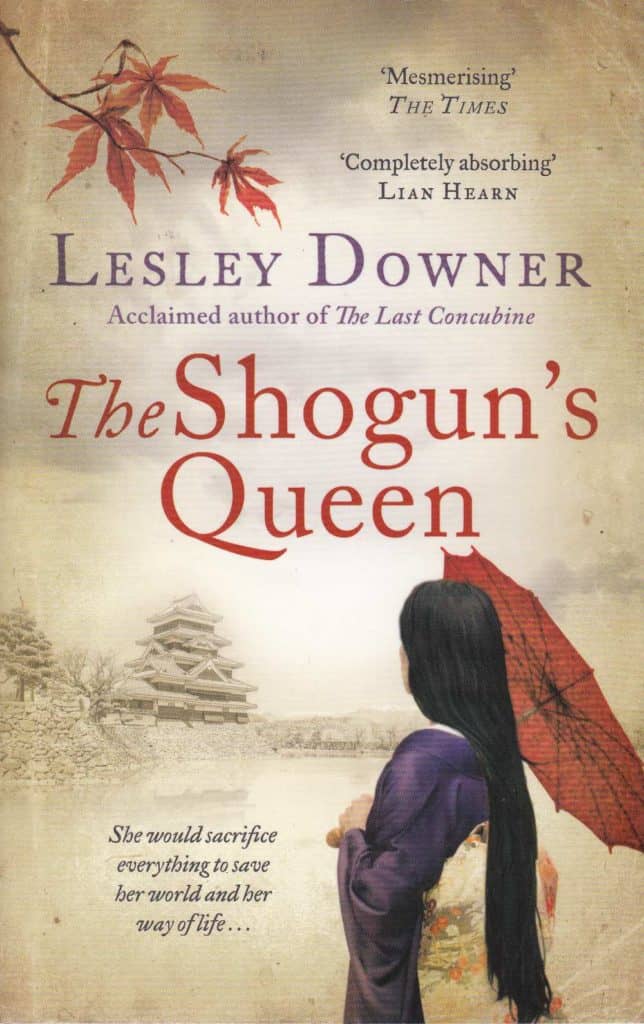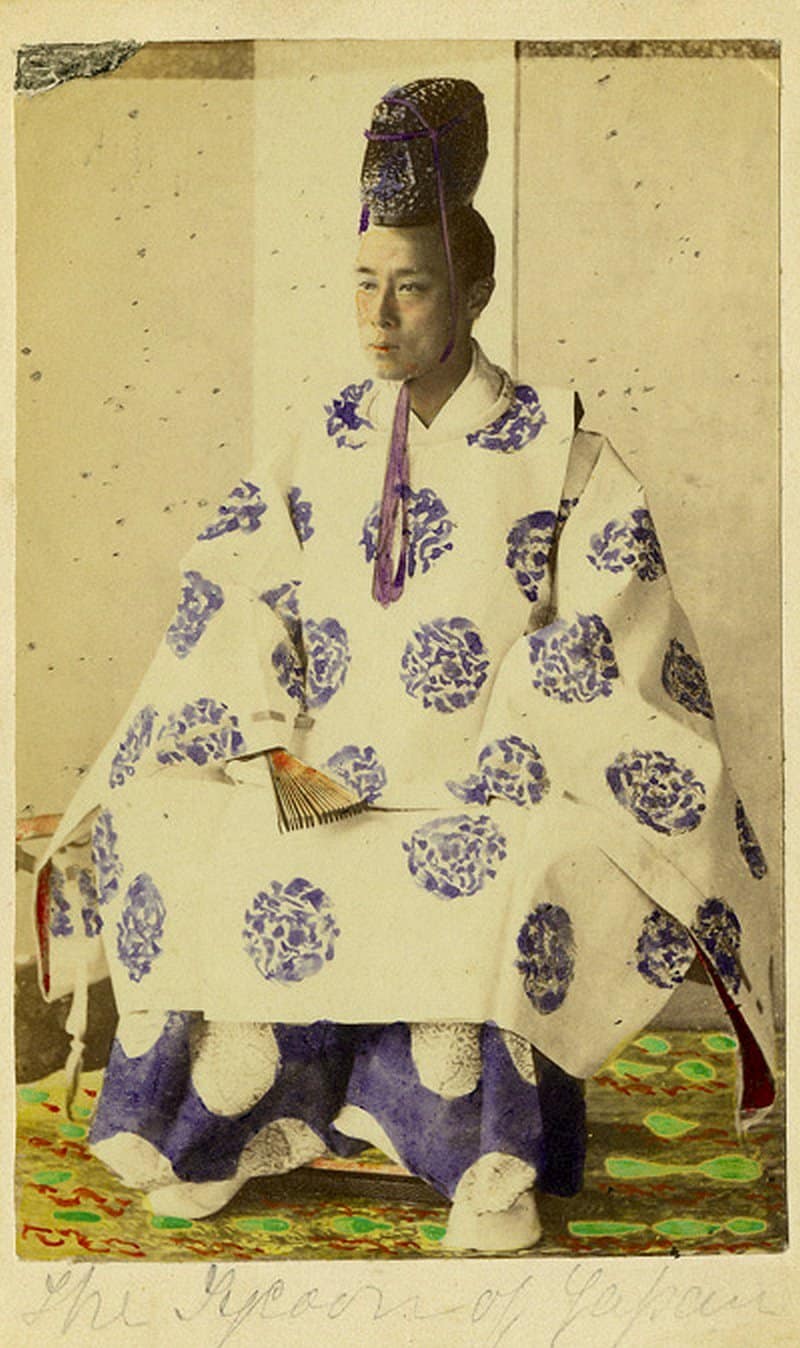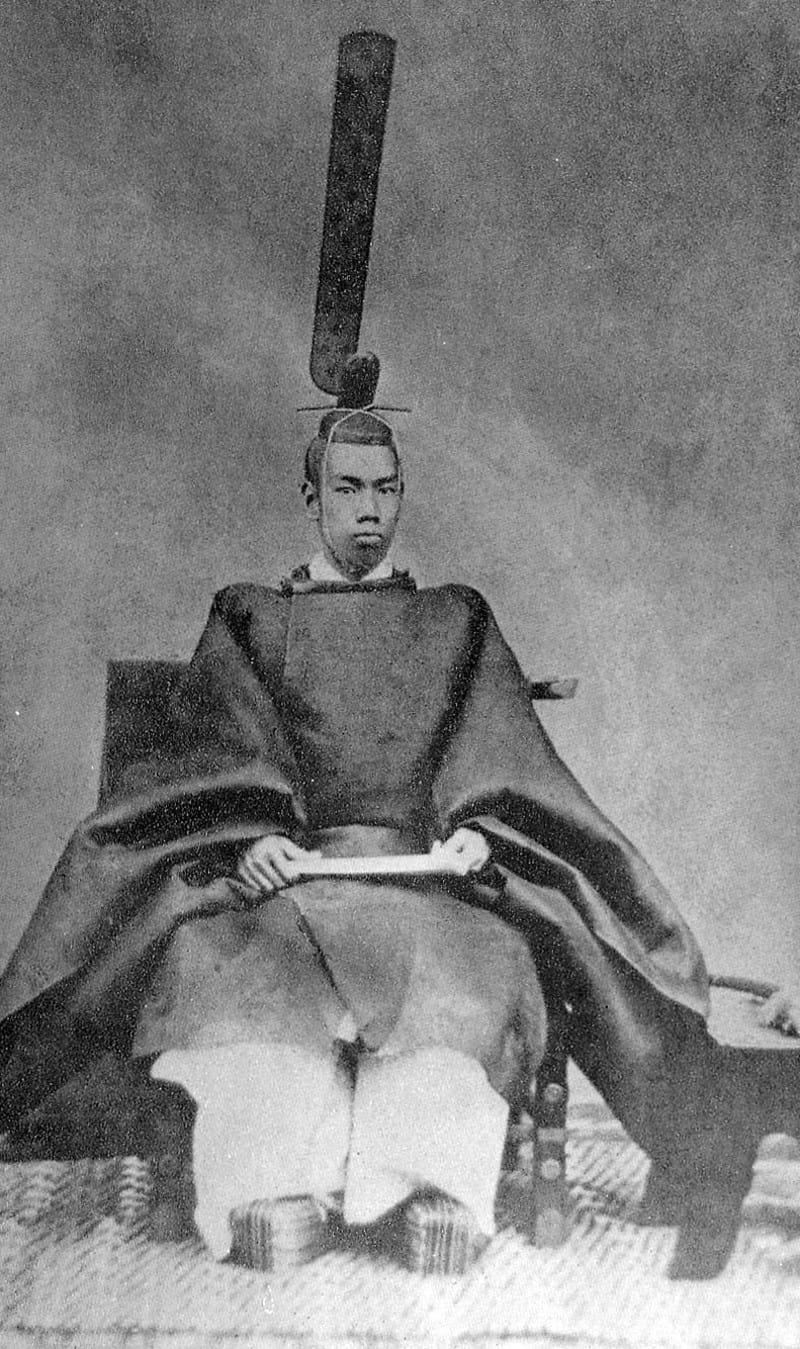On July 8th 1853 four warships appear at the mouth of Edo Bay, threatening Edo, the shogun’s capital, today known as Tokyo. Their leader is the American Commodore Matthew Perry, on a mission to open Japan, which has been closed to foreigners for 250 years. Their arrival sparks civil war between north and south …
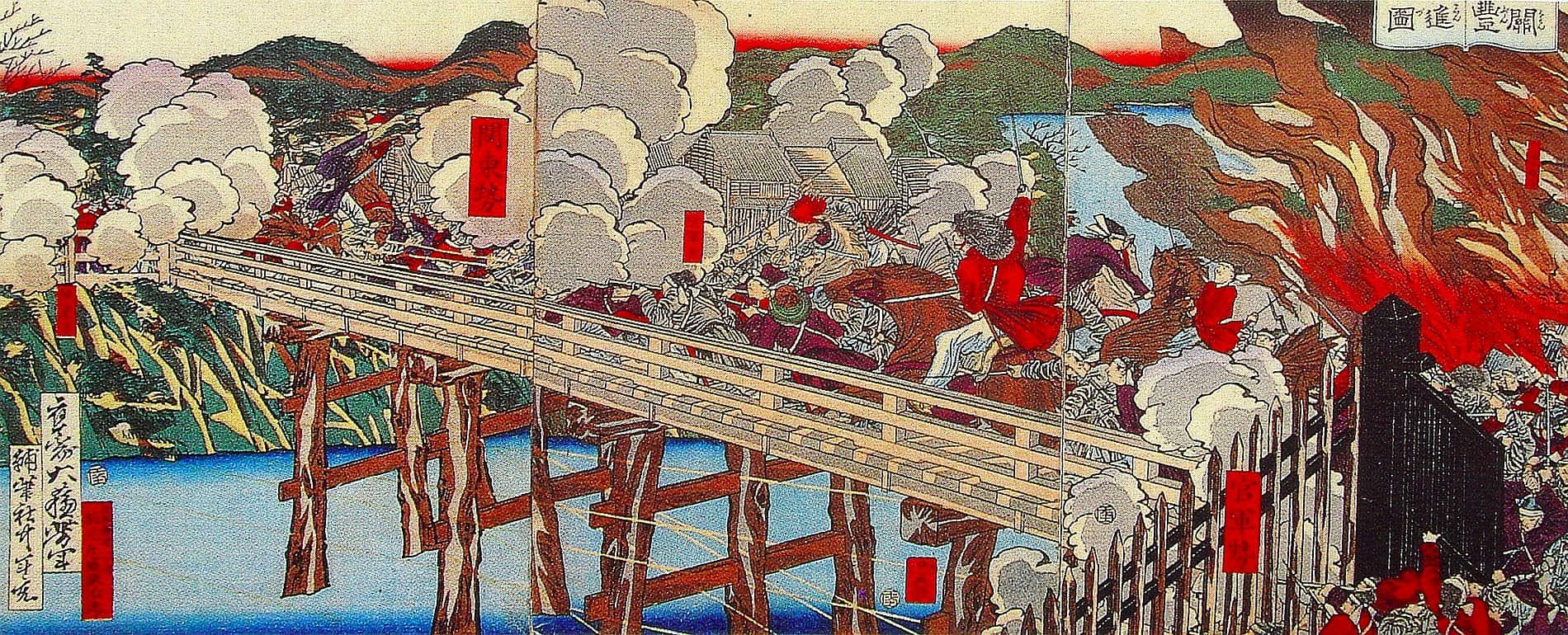
By Anonymous, 1870 (Saigo Takamori and Okubo Toshimichi , by Mori) [Public domain or Public domain], via Wikimedia Commons
This year is the 150th anniversary of the Meiji Restoration of 1868, when Japan catapulted virtually overnight from feudal rule under the shoguns to a modern western state. It was the climax of fifteen years of extraordinary turmoil in Japan, culminating in 1868 with a series of dramatic battles.
I’ll be marking the anniversary throughout the year with blog posts commemorating the events of the entire 15 year period and also specific events that occurred in 1868, starting today – the 150th anniversary of the Battle of Toba Fushimi.
Picture a country divided into 260 princedoms each ruled by a daimyo warlord with his own private army. Some are richer, some poorer, some unimaginably wealthy and powerful. For 250 years the shogun in his castle in the city of Edo – one of the largest, most splendid cities in the world – has held the country together, imposing his rule over all and keeping the country at peace. One way of keeping the peace has been to keep out all foreigners – but the arrival of the American ships turns this delicate balance upside down.
For 15 years after the arrival of the Black Ships there is growing turmoil between north and south. The northern clans – much like Scottish clans – are loyal to the shogun. The southern clans, traditionally the shogun’s ancient enemies, want to take over power themselves and take as their figurehead the teenage emperor Mutsuhito (who will go down in history as Emperor Meiji) whose father – a much stronger figure – has recently met with a suspicious death.

Shogun Yoshinobu Tokugawa photographed in Osaka by Frederick Sutton in 1867[Public domain], via Wikimedia Commons 
The young Emperor Mutsuhito (Emperor Meiji)by Uchida Kuichi
[Public domain or Public domain], via Wikimedia Commons
The country tumbles into anarchy with brawling and battles on the streets of Kyoto. The militant Choshu clan tries to kidnap the boy emperor and sets fire to the city. Secretly the southern clans – primarily the Satsuma from the deep south of the country and the Choshu – plot a bloody coup.
Then the shogun, Yoshinobu Tokugawa, comes up with an idea. He agrees to cede nominal power to the teenage emperor, thus unifying the two sides, assuming that the House of Tokugawa will remain the most powerful clan in the ruling coalition that follows.
But this does not satisfy the southerners. They seize the imperial palace in Kyoto in a coup d’état. The result is full scale civil war.
On the evening of January 27th 1868, the two armies face each other in an area called Toba Fushimi, just to the south of Kyoto. Lined up on one side are the northerners, the shogun’s troops. On the other are the southerners, primarily men of the Satsuma clan. The northerners outnumber the southerners 3 to 1 but the southerners have a secret plan.
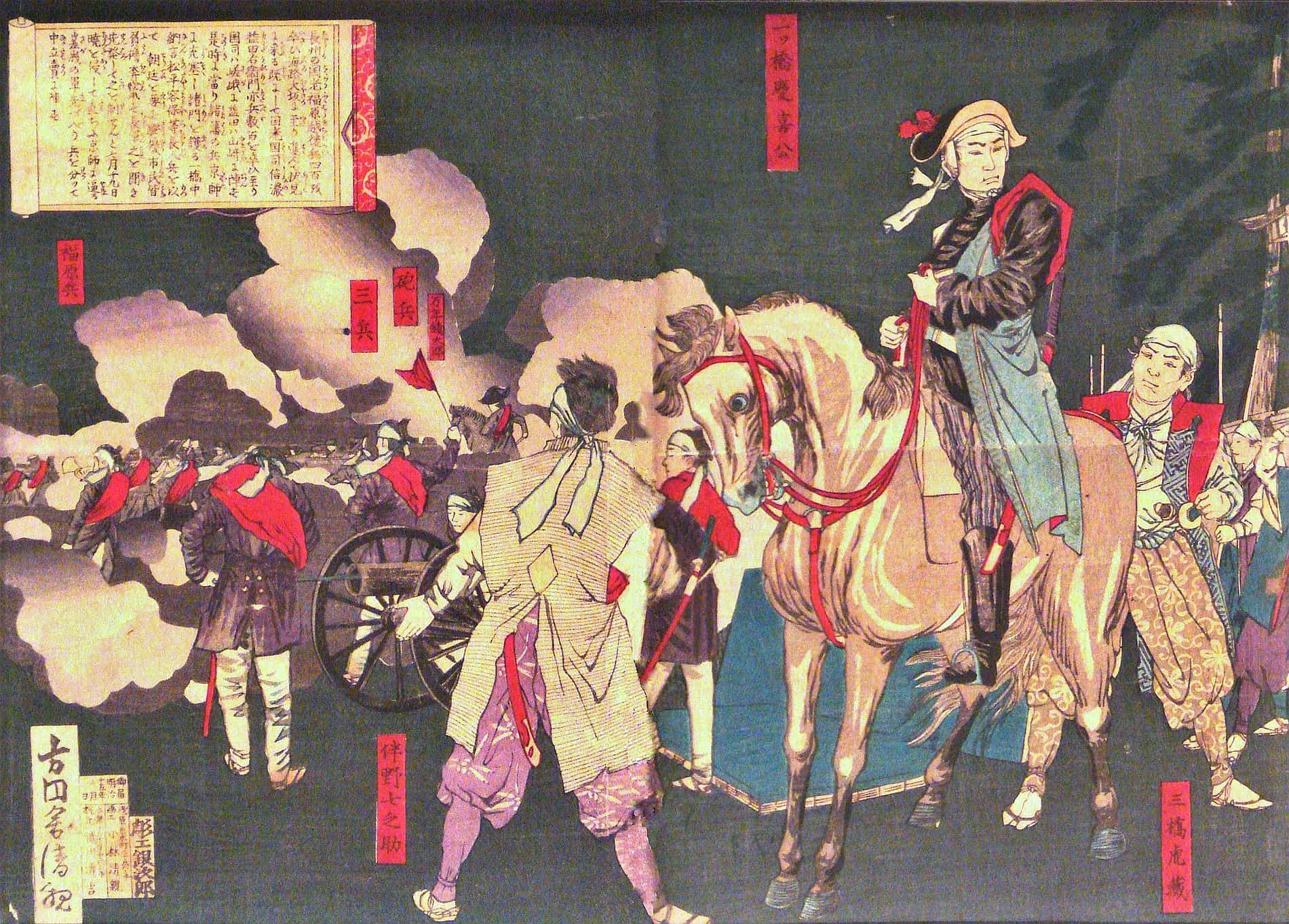
[Public domain], via Wikimedia Commons
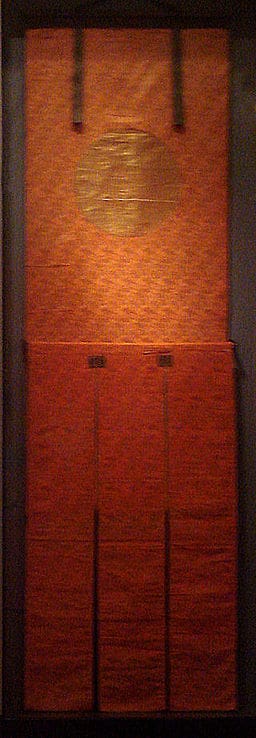
By Uploadalt [CC BY-SA 3.0 or GFDL], via Wikimedia Commons
That night the town of Fushimi burns. The sky overhead glows a dull red.
At first the fighting is fierce. The Satsuma are forced to give ground. Then, on the third day, January 29th, they unleash their trump card. Ichizo Okubo, one of the Satsuma leaders, has secretly arranged for his mistress in Kyoto to stitch red and white damask into imperial banners, showing the imperial chrysanthemum.
Now the banners flutter majestically above the battlefield. At first no one knows what they are. For centuries the emperors have been Pope-like figures hidden away in the imperial palace in Kyoto. No one’s ever seen the imperial banner before, though they’ve read about it in ancient war chronicles.
Then the soldiers see the imperial chrysanthemum and realise what it is. It means that the Satsuma are now the imperial forces. Until now the shogunate have been the legitimate government and the southerners have been the rebels. Now the Satsuma are the legitimate representatives of the emperor while the shogunate’s troops are traitors.
The Satsuma break into a cheer. The shogunate’s troops are utterly disheartened. They fight on, but half-heartedly.
The last thing the shogun wants is to go down in history as a traitor to the emperor. He abandons Osaka Castle where he’s been directing the battle, abandons his troops, takes refuge on a ship and sails back to Edo.
The red and white pennant was a forgery – but a forgery that changed the course of history.
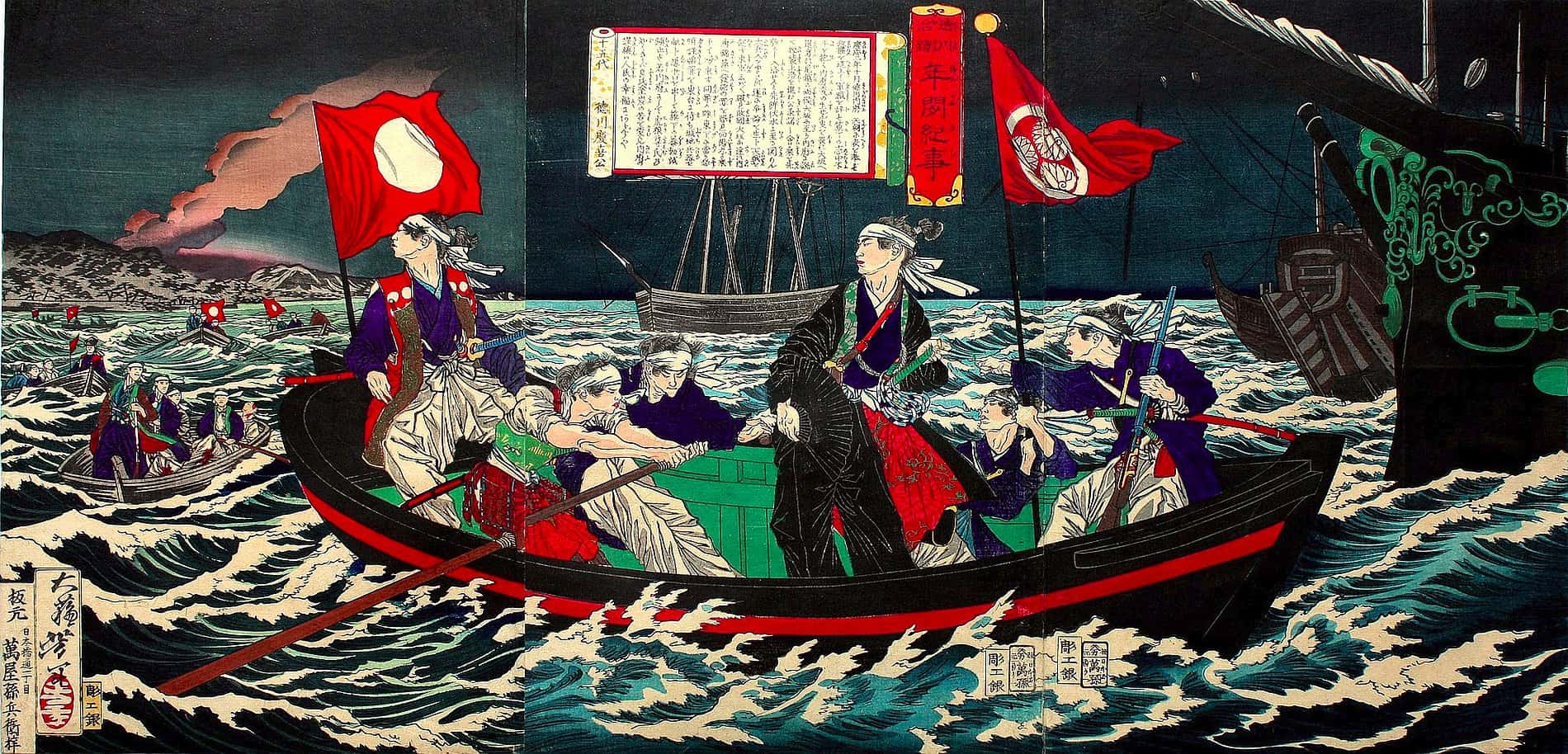
[Public domain], via Wikimedia Commons
For a dramatic telling of the events of this momentous story, see The Shogun’s Queen and the other three novels of The Shogun Quartet.
